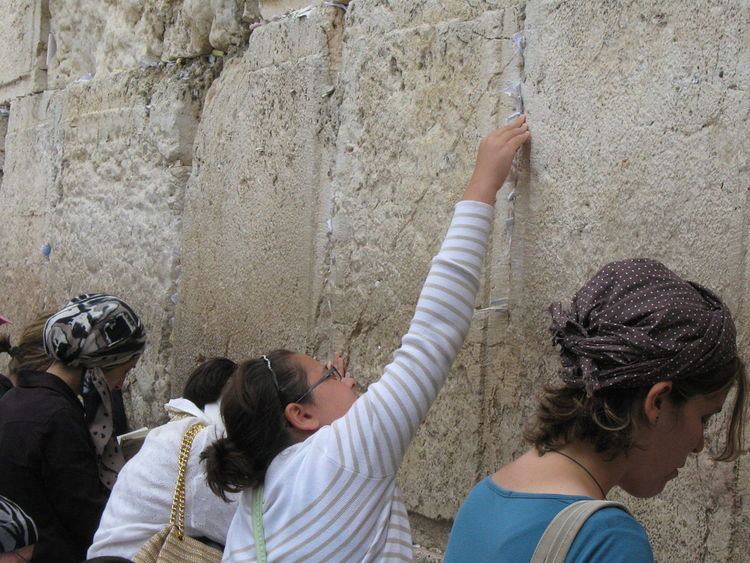 | ||
Placing notes in the Western Wall refers to the practice of placing slips of paper containing written prayers to God into the cracks of the Western Wall, a Jewish holy site in the Old City of Jerusalem.
Contents
The earliest recorded occurrence of such a phenomenon dates from the early 18th century and stems from the Jewish tradition that the Divine Presence rests upon the Western Wall. There is however a dispute as to whether it is permissible according to Jewish law to insert slips of paper in to the crevices. Some argue that the practice debases the holiness of the Wall and that the placement of notes should be discontinued.
Over a million notes are placed each year in what has become a custom, not only for tourists, but also for high-profile dignitaries visiting Israel from abroad. The notes are collected twice a year and buried on the nearby Mount of Olives.
History
The earliest account of the placing prayer notes into the cracks and crevices of the Western Wall was recounted by Rabbi Chaim Elazar Spira of Munkatch (d. 1937) and involved Rabbi Chaim ibn Attar (d. 1743) who instructed a destitute man to place an amulet between the stones of the Wall.
The rationale behind placing prayer notes in the Wall has been traced to the Midrashic teaching that the Divine Presence has never moved from the Western Wall, and the Kabbalistic teaching that all prayers ascend to Heaven through the Temple Mount, which the Western Wall abuts.
Modern-day practice
Today, more than a million prayer notes or wishes are placed in the Western Wall each year. Notes that are placed in the Wall are written in just about any language and format. Their lengths vary from a few words to very long requests. They include poems and Biblical verses. They are written on a wide variety of papers, including colored paper, notebook paper and even bubblegum wrappers, using a variety of inks.
Rabbi Shmuel Rabinovitch, Rabbi of the Western Wall, receives hundreds of letters yearly addressed to "God, Jerusalem"; he folds these letters and places them, too, in the Wall.
Online services offer petitioners the opportunity to send their notes to the Western Wall via e-mail, fax, text messaging and Internet; the note is then printed out and inserted in the Wall. The Israeli Telephone Company has established such a fax service, as have a number of charitable websites.
